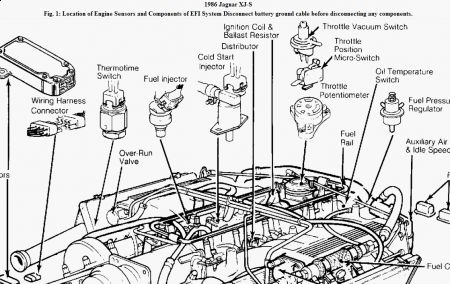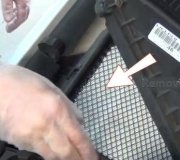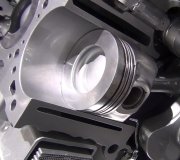I have a 1986 Jaguar XJS V12. Vin Number: SAJNV584XGC130468. 2 Door Coup. This is the first time using this site. I deposited $45.00 as good faith that I want help in solving this problem.
Problem: The vehicle runs rich, the engine is erratic at idle, no acceleration, and black smoke comes out both tail pipes. The engine will stall after a few minutes. If the fuel pump relay is removed, the engine smoothes out until the fuel runs out. The car was to other mechanics that apparently were not capable to assess and correct the problem. They may have created additional problems. We cannot take anything for granted and must do our own diagnosis and tests.
INITIAL INSPECTION:
BATTERY: Battery was dead in car. Recharged battery.
OIL: The oil was contaminated with gasoline. The dipstick measured approximately eight inches above the fill level. We drained the oil and approximately fifteen quarts of fluid went into the drain bucket. The oil was very thin because it was mixed with gasoline. We changed the oil, installed a new oil filter, eleven quarts of oil, and one bottle Engine Restore.
AIR FILTERS: We replaced both air filters with STP air filters.
GASOLINE: The gasoline was old and smelled like varnish. We pumped out the old gasoline, flushed the fuel lines from the engine back to where the fuel filter is with compressed air and changed the fuel filter. We added one bottle of Techtron fuel conditioner and four ounces of fuel stable.
ENGINE: The engine has leaves, debris and surface dirt. The injector clips are missing. Found loose wires. Brake fluid is low. The spark plugs were fouled. Bolt missing on duel throttle actuator.
Tests:
Timing: was set at 18 Degrees BTDC but could not get 2000 RPMS.
Plugs: set at.025 gap. Champion Plugs RC9YC
Coils: Main and Auxiliary coils produced 12 volts.
Coolant Temperature Sensor: Replaced
Air Temperature Sensor: Passed ohms test – 800 ohms
Throttle switches (2) have been replaced
ENGINE Action
Detail engine Done
Replace hood struts. Done
Replace brake fluid. Done
Replace power steering fluid. Done
Replace coolant.
Replace thermostat gaskets Done
Oil and filter change: STP 2995 Done
Replace air filters: 2 Done
Replace fuel filter: FF761 Done
Replace belts: 4 Done
Replace thermostats: 2 Done
Made new fuel injector clips. “Paper Clips" Done
Replace Throttle Kick down switch Done
Replace Throttle Micro Switch Done
Repair Detent Cable Done
Replace spark plugs: Champion RC9YC: #344 “.025 gap." Done
Replace Inlet fuel pressure regulator Done
Replace outlet fuel pressure regulator Done
Check distributor cap and rotor condition. Done
Check distributor position to No 1 Cylinder. Done
Clean Oxygen Sensors Done
Check Distributor timing mark Done
Check Spark Plug wire position on Cap Done
Check Distributor Cap and Rotor Done
Clean internal injection rail Done
Replace ignition module: DR100 Done
Clean, detail, and polish engine and compartment Done
Clean PCV valve and breather element Done
Compression test. Done
Front Wet Test
1B 150 1A 155
2B 100 130 2A 155
3B 150 3A 160
4B 130 185 4A 160
5B 130 185 5A 150
6B 135 160 6A 160
Fuel injectors: Resistance, Noid light, and Leak down test Done
Fuel pressure at Fuel Filter is 40 Lbs.
Fuel pressure at rail is 38Lbs.
We removed the fuel rail and connected the fuel lines and did not see any fuel leakage from any of the injectors.
SPONSORED LINKS
Thursday, May 21st, 2009 AT 10:40 AM





